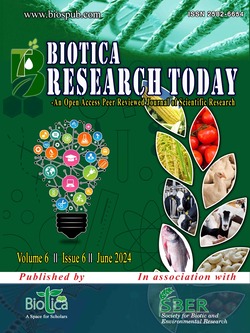
Silk Spinning Process: An Overview
Pavithra A.*
Dept. of Entomology, College of Agriculture, Rajendranagar, PJTSAU, Hyderabad, Telangana (500 030), India
Monica S.S.
Dept. of Entomology, College of Agriculture, Rajendranagar, PJTSAU, Hyderabad, Telangana (500 030), India
Hariharan Selvam
Division of Entomology, ICAR-Indian Agricultural Research Institute (IARI) Mega University, Hyderabad Hub, Hyderabad, Telangana (500 030), India
DOI: NIL
Keywords: Arthropods, Insects, Silk, Spinning
Abstract
Greater than 400 million years of natural selection acting throughout the arthropod has resulted in highly specialized and potentially efficient processes to create a protein-based fiber with adequate properties that are a source of inspiration for all. Silk spinning has been observed in various organism including spiders and insects. It exhibits a notable biological source of inspiration for advanced polymer fabrications. Silk spinning has offers a potential significance in polymer and synthetics manufacturing. With the passage of times advancement achieves in various steps of process in sericulture areas and produced good quality of silk.
Downloads
not found
Reference
Das, S., 2023. Anthropogenic activities threatening Muga culture in Assam. Indian Farmer 10(7), 304-306.
Islam, Z., 2019. Comparing quality parameters of yarn produced by ring, rotor and compact spinning system. European Scientific Journal 15(3), 461-477. DOI: https://doi.org/10.19044/esj.2019.v15n3p461.
Sanapapamma, K.J., Naik, S.D., 2008. Contemporary breakthrough in Ahimsa silk spinning. Indian Journal of Traditional Knowledge 7(1), 178-181.
Wang, B., Zheng, R., Yang, W., Han, X., Hou, C., Zhang, Q., Li, Y., Li, K., Wang, H., 2022. Synergistic solvation and interface regulations of eco‐friendly silk peptide additive enabling stable aqueous zinc‐ion batteries. Advanced Functional Materials 32(23), 2112693. DOI: https://doi.org/10.1002/adfm.202112693.
